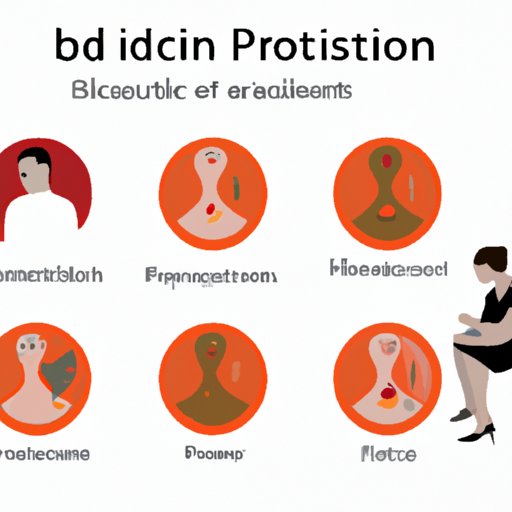
I. Introduction
When you think you might have been exposed to an illness, one of the most common questions you might have is how long after exposure do symptoms start? The answer to this question is not always straightforward because it can vary depending on the disease, individual factors, and other variables. This article will explore the topic in-depth and provide you with the information you need.
II. A Timeline of Symptoms
The time between when you are exposed to a disease and when the first symptoms appear is known as the incubation period. This period can vary dramatically depending on the illness, ranging from hours to weeks.
The average incubation periods for certain illnesses are:
- Influenza: 1-4 days
- Measles: 10-14 days
- Chickenpox: 10-21 days
- HIV: 2-4 weeks
- Hepatitis A: 2-6 weeks
- Ebola: 2-21 days
It’s important to keep in mind that while these are the average incubation periods, some people may experience symptoms sooner or later than these timeframes.
III. Variations Based on Individual Factors
Individual factors can influence the timing of symptoms after exposure. Factors such as age, immune system, and overall health can play a role in when symptoms appear.
For example, older adults and people with weakened immune systems may experience symptoms sooner than younger, healthier individuals. People with certain chronic illnesses may also experience symptoms sooner than others.
Individual variation is important to consider when diagnosing and treating illnesses because it can affect the perceived severity of symptoms and the effectiveness of treatments. It’s essential to communicate any individual factors to healthcare professionals when seeking care.
IV. The Importance of Tracking Your Own Health
Keeping track of your symptoms and timeline can be incredibly helpful for healthcare professionals when diagnosing and treating illnesses. It allows them to have a better understanding of when symptoms started and how they progressed.
When tracking your own health, make a note of the specific symptoms you’re experiencing, when they started, and how severe they are. This information can also help you better understand your own health and what actions to take if you experience symptoms in the future.
V. Variations by Disease
As stated earlier, the incubation period and the time until symptoms appear varies depending on the specific disease. Here are a few examples:
- COVID-19: 2-14 days, typically 5 days
- Mumps: 14-21 days
- Tuberculosis: 2-12 weeks, typically 4-6 weeks
- Zika virus: 3-14 days
It’s important to be able to differentiate between the symptoms of different diseases, so seek medical attention immediately if you experience symptoms or have been exposed to a disease.
VI. Risk Factors
There are certain risk factors that can increase the likelihood of experiencing symptoms sooner or later after exposure to a disease. Some of these factors include:
- How much of the pathogen or virus was initially transmitted
- The route of transmission (e.g., airborne, waterborne, sexually transmitted, etc.)
- The strength of the person’s immune system
Some situations that increase the risk include attending a crowded event, living in a densely populated area, or traveling to an area with high incidences of a disease.
VII. Psychological Factors
Psychological factors such as anxiety and stress can play a role in the onset of symptoms. Studies have shown that individuals who are anxious about contracting an illness may experience symptoms sooner or more intensely than others. Additionally, psychological stress can weaken the immune system, increasing the likelihood of experiencing symptoms sooner after exposure.
VIII. Implications for Public Health
Understanding when symptoms are likely to appear is essential for public health authorities when working to control outbreaks of infectious diseases. Knowing the average incubation period for a particular disease, for example, can help them identify individuals who may have been exposed more quickly and initiate contact tracing to limit spread.
The knowledge of the timing of symptoms may also affect the strategies used to control outbreaks. For example, implementing mass testing programs and quarantine measures can be effective, but only if they are deployed at the right time to limit the spread of the disease.
IX. Conclusion
Knowing how long after exposure do symptoms start can help individuals make informed decisions about their health and may help healthcare professionals diagnose and treat illnesses more effectively. By keeping track of your own health and communicating any individual factors to healthcare professionals, you can play an active role in your healthcare and contribute to public health efforts to control outbreaks.
If you have been exposed to a disease, seek medical attention immediately if you experience any symptoms. Together we can work to prevent the spread of infectious diseases and protect public health.




